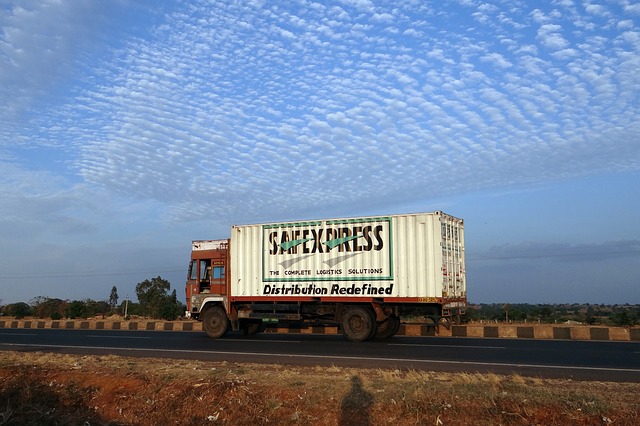Whether you are a manufacturer looking to deliver your own products, an up-and-coming distribution or delivery company, or just a business that wants full control over your logistics and shipping, fleet management is going to be key to your success.
We recently wrote a post about the multitude of things you need to think about when it comes to investing in a fleet of vehicles, and today we are going to take things a little further. In this guide, we’re going to show you how to keep your costs down in what can be a very expensive outlay for any business, regardless of size. Let’s take a closer look at some of your options.
Fleet Size Is Key
It’s fair to say that reducing the number of vehicles in your fleet is the most obvious way to reduce your overall spending. You can expect to spend between from $5,000 to $8,000 per vehicle, per year on your fleet, so there is huge opportunity to cut costs by cutting back on transport. However, the reality is that it is a fine balancing act between expense and an increased workload required of the remaining drivers of those fleet vehicles, not to mention the fact that you may find yourself short on delivery options during some periods.
Mileage Mounts Up
As you are managing your fleet, take great care in tracking the routes and journeys of every vehicle. The more miles traveled, the more it will cost – it’s that simple. And while it is certainly an area where you might feel you have no control – Package A has to get to Location B, of course – there are solutions. Make sure that all vehicles are stocked with a justifiable amount of deliveries, monitor driver territories, and marry the number of sales/service calls with your vehicle’s mileage and time.
Technology Tells a Story
Take advantage of all the wonderful fleet management technology that is out there. Sure, it will all come at a cost, but the reality is that it is – for the most part – pure investment that will give you a return. In fact, given the teleconferencing and communication technologies, it’s reasonable to assume you can even eliminate the need for physical travel for non-delivery purposes.GPS and telematics for a truck fleet can help you track drivers and say goodbye to unnecessary mileage, too – as well as reducing the amount of accidents your company has to pay for. With technology, you can really start to make serious cost savings that might seem minute per vehicle, but can mean huge amounts of additional profits per fleet.
Embrace the Environment
You might think the federal government regulations is giving you a rough ride with its environmental demands. But over time, these will end up saving you money. Reducing he vehicle sizes and weights is a great way to lower your fuel costs while also keeping in line with your environmental obligations. Some of the amazing automotive technologies out there will help you reduce your costs, too – such as hybrids and electric vehicles. Yes, they will cost a little more upfront, but they will certainly yield more savings in the mid- to long-term. And finally, of you can try modifying driver behavior by educating them about the dangers and pointless waste of hard acceleration, idling, inconsistent speeds, excess use of air conditioning, and hard braking. These small things alone can help you save somewhere in the region of a third of all fuel costs per vehicle.
The Folly of Fuel
On the subject of fuel, it’s going to be one of your largest expenses. And the reality is that it isn’t one that you are going to have full control over – oil companies set the prices at the pumps, after all. It’s a good idea to keep a close ear to the ground in terms of the oil prices for potential spikes, and ensure you are keeping your drivers aware of your fuel management policies and programs.
Lower Acquisition Cost
Your biggest cost should be the one you make at the beginning – when you buy your vehicles. Or so you might think. In truth, your vehicle acquisition could be a lot cheaper than you might think if you know where to look. Major manufacturers often give huge discounts for companies buying fleets, and you can negotiate with dealers for a variety of different things, including factory holdbacks, flooring finance, and advertising refunds.
Maintenance Matters
Just like you keep your personal car in great condition, so you should keep your fleet vehicles in an optimum state. Good maintenance practices, and vehicles should be serviced at least every 3,000 miles. However, you can save money if you have light-duty fleet, who don’t need quite so much looking after – you can extend those intervals to between 6,000 and 7,000 miles.
Have The Right Equipment
Carrying out basic maintenance and repairs is an essential part of managing your fleet. You’ll need to make sure you have all of the right tools to actually do this. If you don’t, you wouldn’t be able to carry out these tasks properly, if at all. When you’re checking out a vehicle’s electronics, for example, you’ll need Cat ET software.
The same can be said for any other tools or equipment you’ll need to carry out the maintenance and repairs. While this is a bit of an upfront investment, it’ll bring your costs down in time. You wouldn’t have to worry about doing it wrong, which could lead to further damage and higher costs.
Crash Costs Count
It should go without saying that the safe operation of any vehicle in your business should be of paramount importance. But how can you ensure that everyone is on the same page when it comes to safety? First and foremost you need an effective safety management program. This can reduce the risk and cost of accidents, injuries and insurance. It’s also a good way of increasing driver productivity, morale and retention. However, bear in mind that these safety programs need to be driven throughout the organization as a whole – not just by a single voice in your company. It has to become part of the culture if you want to enjoy the fruits of its influence.
No one said reducing costs in your fleet was easy. But as we have highlighted above, there are so many savings you can make with just a little bit of maneuvering, focus on safety, and savvy operational processes. The best possible way to get things started – and give you more chances of success – is to establish your key performance indicators and observe trends and changes as they occur over time. Once you start collecting your data, you will find it easy to identify areas in need of change, and where cost savings can be made with most effect.



No comments yet.